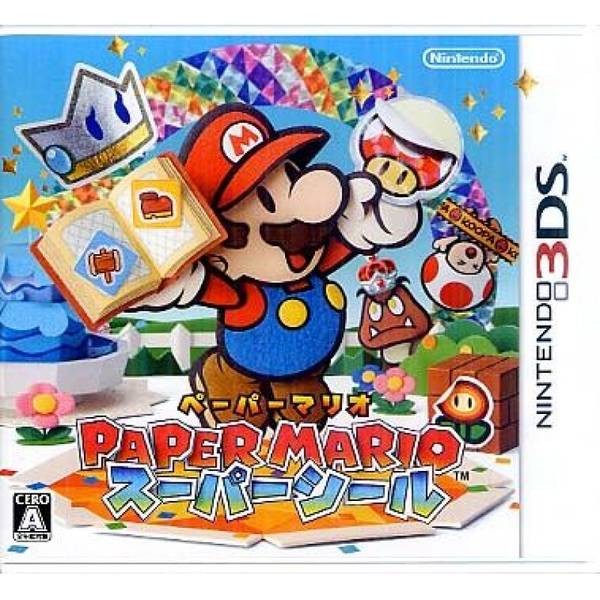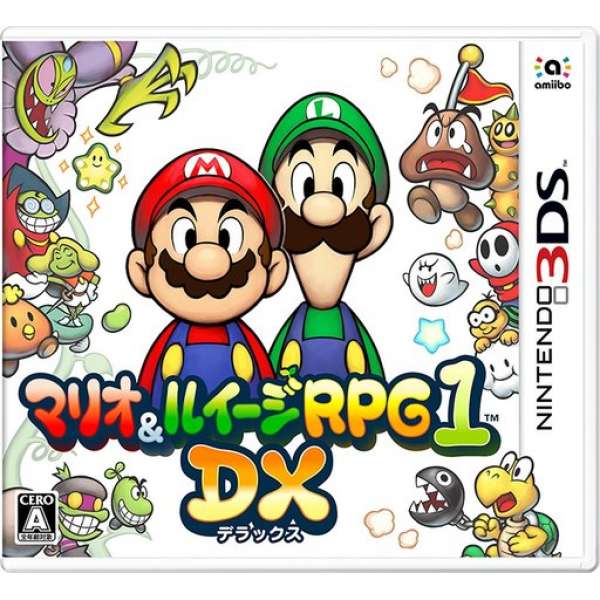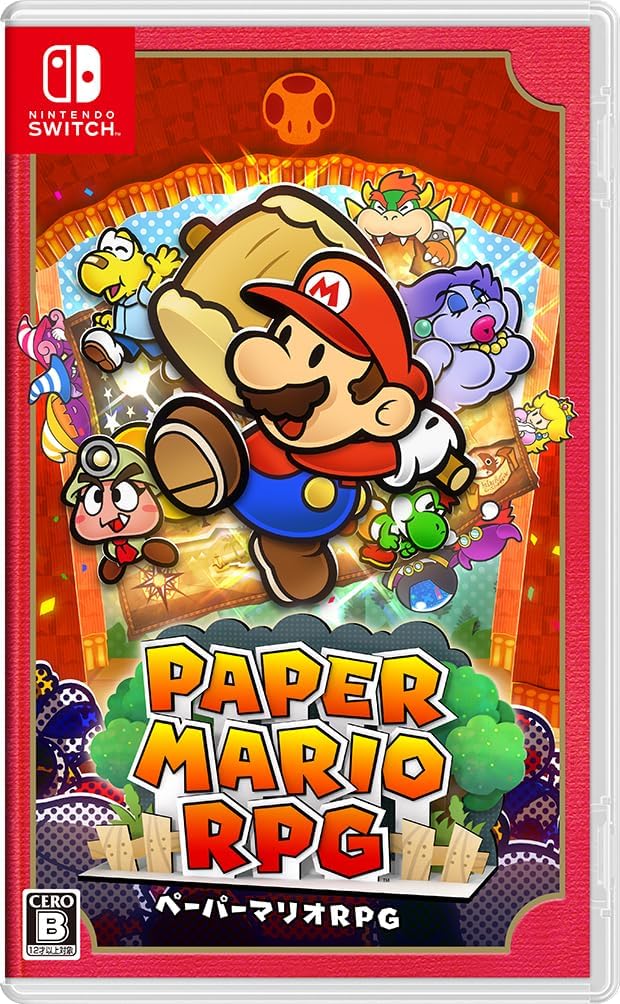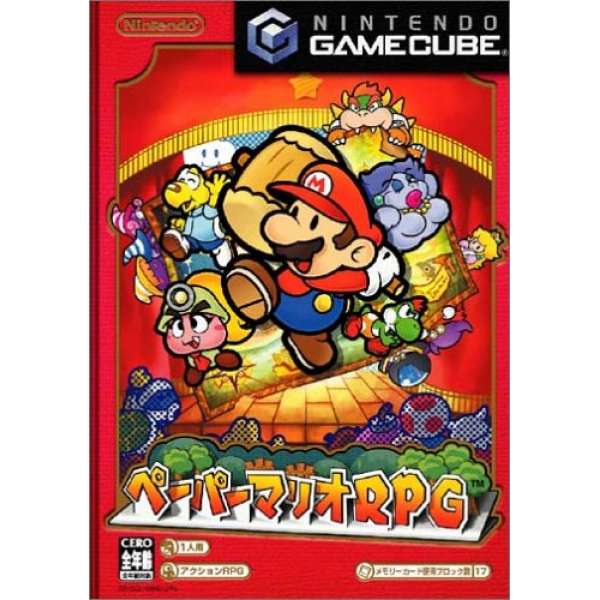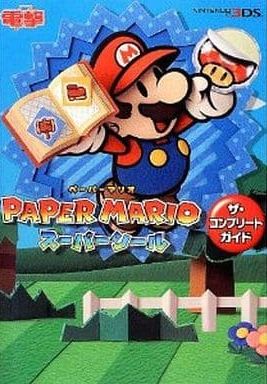紙片瑪利歐 超級貼紙
《紙片瑪利歐 超級貼紙》(日文名稱:ペーパーマリオ スーパーシール / 英文名稱:Paper Mario: Sticker Star)是由Intelligent Systems開發、任天堂發行的角色扮演冒險遊戲,於2012年在3DS平台推出。是《紙片瑪利歐》系列首度登上3DS掌機,並在保留原有紙片美術風格與幽默敘事基調的同時,加入「貼紙」作為核心玩法元素,試圖為系列帶來全新的操作體驗與解謎策略。
故事背景以熟悉的瑪利歐世界展開,圍繞「貼紙流星」(Sticker Comet)的事件展開。這顆流星據說擁有實現願望的神秘力量,每年在「貼紙節」的夜晚會降臨蘑菇王國。然而,在本作開場的貼紙節典禮上,庫巴闖入現場並觸碰貼紙流星,導致它碎裂成6塊「皇家貼紙」(Royal Stickers),而庫巴也受到其中一張的黑暗力量影響,成為最終頭目。瑪利歐必須踏上旅程,尋找散落各地的皇家貼紙,修復秩序並阻止庫巴的陰謀。在旅途中,他會與來自貼紙王國的夥伴—漂浮精靈凱斯(Kersti)同行。儘管劇情較為簡化,支線與角色互動也較過往作品薄弱,但整體仍維持瑪利歐系列一貫的歡樂與幽默基調。
操作系統方面,將傳統的RPG戰鬥系統做大幅變革,採用「貼紙」作為攻擊與技能的核心機制。在世界各地的場景中探索時,需收集各種不同類型的貼紙,包括跳躍貼紙、錘子貼紙、火焰花貼紙、龜殼貼紙等,每一張貼紙對應一種攻擊動作或特殊效果。戰鬥中無傳統的攻擊指令選單,必須從貼紙簿中選擇已收集的貼紙進行攻擊,並根據時機按鍵輸入來提升傷害,延續系列一貫的「動態回合制」戰鬥風格。
這種設計讓貼紙成為遊戲中的消耗資源,強調策略性與資源管理,迫使在探索時需不斷收集與整理貼紙種類,並依據敵人的屬性與戰況選擇適合的貼紙進行應戰。不過,這種完全依賴貼紙的機制也引起一些爭議,尤其在BOSS戰中,部分「特定貼紙」(即Thing Stickers)幾乎是過關的唯一手段,若事先未取得或攜帶正確貼紙,將無法繼續進行,導致部分玩家體驗卡關挫折。
在關卡設計方面,以世界地圖形式呈現,類似於《超級瑪利歐世界》那樣的關卡分佈,整體區分為六大區域,每個區域內含若干場景,需逐一解謎、收集道具並挑戰敵人以打通路線。各關卡都擁有獨特的主題與設計風格,例如森林、沙漠、雪山、火山與城市等,每個場景均藏有隱藏路徑與貼紙牆面,鼓勵玩家反覆探索。此外,還引入「現實物品轉化成貼紙」(Things)系統,可蒐集如吸塵器、電風扇、果汁機等真實道具,透過遊戲中的「貼紙工坊」將其變為超強貼紙,用於特定機關解謎或戰鬥用途,這些貼紙往往是進行主線關卡的關鍵,強化了解謎過程的趣味與挑戰性。
儘管視覺表現與創意設計依舊亮眼,許多媒體與玩家仍對其遊戲平衡性與角色深度提出批評。特別是在戰鬥中無法獲得經驗值這一點,被認為削弱玩家參與戰鬥的動機,讓戰鬥變得像是對資源的純消耗而非成長手段。角色方面,幾乎取消系列傳統的夥伴系統,只保留凱斯作為劇情指引與提示角色,這使得角色互動與故事層次略顯單薄,缺乏以往《紙片瑪利歐》系列令人印象深刻的支援角色群像劇。
在市場評價方面,獲得褒貶不一的反應。部分玩家與評論者讚賞其圖像表現出色,紙片風格細膩、關卡構成具有創意,且戰鬥系統在策略與資源管理上帶來新鮮感。然而,也有不少人批評該作偏離傳統RPG的成長系統,導致整體流程節奏感不穩,缺乏長期推進的動力。Metacritic網站上的評分維持在70分左右的中上水平,代表它是有創意但未臻完善的作品。
總體而言,這是在風格與系統上嘗試創新、但在核心結構上爭議性頗高的作品。保有系列一貫的視覺幽默與機關設計魅力,但在角色深度、成長機制與戰鬥樂趣方面的改變,讓老玩家的接受度出現分歧。對於喜愛探索與解謎、享受創意場景與視覺呈現的玩家而言,這仍然是色彩繽紛、風格獨特的冒險旅程;而對於習慣傳統RPG養成與劇情厚度的粉絲來說,則可能需要多點耐心與包容才能享受其中樂趣。
Paper Mario: Sticker Star (Japanese Title: ペーパーマリオ スーパーシール / English Title: Paper Mario: Sticker Star) is a role-playing adventure game developed by Intelligent Systems and published by Nintendo, released in 2012 for the Nintendo 3DS platform. It marks the Paper Mario series’ debut on the 3DS handheld console, while retaining the series’ signature paper-craft visual style and humorous narrative tone. The game introduces “stickers” as a core gameplay element, aiming to bring new control experiences and puzzle-solving strategies to the series.
The story is set in the familiar Mario universe, centering around the Sticker Comet, a legendary object said to grant wishes, which visits the Mushroom Kingdom every year during the Sticker Fest. However, during the festival’s opening ceremony, Bowser suddenly intrudes and touches the Sticker Comet, causing it to shatter into six pieces known as Royal Stickers. Bowser is then possessed by the dark power of one of these Royal Stickers, becoming the game’s final boss. Mario embarks on a quest to retrieve the scattered Royal Stickers, restore order, and thwart Bowser’s scheme. Along the way, he is joined by Kersti, a floating sticker fairy from the Sticker Kingdom. Though the storyline is simpler and the side content and character interactions are lighter than in past entries, the game maintains the Mario series’ trademark lightheartedness and humor.
In terms of gameplay, the traditional RPG battle system has been heavily revamped, centering around “stickers” as the main mechanic for attacks and abilities. While exploring the various stages, players collect different types of stickers — such as Jump Stickers, Hammer Stickers, Fire Flower Stickers, and Koopa Shell Stickers — each corresponding to a specific action or special effect. Battles lack a traditional command menu, requiring players to select collected stickers from a sticker album to attack, with timed button presses enhancing the damage. This continues the series’ signature action turn-based combat style.
This system turns stickers into a consumable resource, emphasizing strategy and inventory management. Players must constantly collect and organize stickers while exploring, choosing the most suitable ones for each enemy type and combat situation. However, this reliance on stickers sparked controversy, especially since certain boss battles require specific “Thing Stickers” — powerful stickers created from real-world objects — to be completed. Without the right sticker in hand, players can’t proceed, leading to frustration and difficulty spikes for some.
The stage design follows a world map layout, similar to Super Mario World, divided into six major regions, each containing multiple levels that require puzzle-solving, item collection, and enemy battles to clear. Each stage has a distinct theme and design style — from forests and deserts to snowy mountains, volcanoes, and towns — with hidden paths and sticker-covered walls encouraging repeated exploration. The game also introduces the “Things” system, allowing players to collect real-world objects like vacuums, fans, and blenders, and turn them into powerful stickers at the Sticker Comet Workshop. These are often crucial for solving puzzles or defeating bosses, adding creativity and challenge to the game’s progression.
Despite its charming visuals and creative concepts, many media outlets and players criticized its game balance and lack of character depth. In particular, the absence of experience points in battles was seen as a flaw, removing the traditional RPG sense of progression and making combat feel like a resource drain rather than a growth opportunity. On the character side, the series’ party system was largely removed, with Kersti serving as the sole guide and hint-giver. This left character interactions and story depth feeling comparatively thin, lacking the memorable supporting casts of previous Paper Mario titles.
In terms of reception, Paper Mario: Sticker Star received mixed reviews. While some players and critics praised its excellent visual presentation, creative paper-themed level design, and the freshness of its resource management-based battle system, others criticized its deviation from traditional RPG mechanics, resulting in uneven pacing and a lack of long-term motivation. On Metacritic, the game holds a score around 70, reflecting a creative but imperfect entry in the series.
Overall, Paper Mario: Sticker Star is a bold attempt at stylistic and gameplay innovation within the series, though its core structural changes proved divisive. It preserves the franchise’s trademark visual humor and clever puzzle mechanics, but alterations to character depth, progression systems, and combat enjoyment led to mixed reactions, particularly from long-time fans. For players who enjoy exploration, puzzle-solving, and creative environments, this remains a colorful and distinct adventure. However, for those accustomed to the traditional RPG growth systems and deeper storytelling of earlier titles, it may require extra patience and an open mind to fully appreciate its unique charms.
運費計算方式:
貨款滿1000元運費外加90元
貨款1000以下:買1件運費外加 60元,買2件運費外加 70元,
買3件運費外加 80元 ,買4件運費外加 90元
貨到付款外加30元手續費
外島及大陸地區運費另計
付款方式:
線上刷卡:本站採用Paypal線上刷卡
虛擬帳號匯款:屬於您專屬的虛擬帳戶,方便站長查帳使用,本站強力推薦
實體ATM匯款:請將匯款帳號記錄下來至各大銀行ATM提款機轉帳
超商條碼繳費:請列印本站提供的條碼至四大超商繳費
線上轉帳:透過玉山銀行線上ATM轉帳(此系統只支援IE瀏覽器)
貨到付款:本站採用黑貓宅急便貨到付款
其他注意事項:
如需購買線上點數卡請直接跟站長連絡,本站不提供點數卡的線上付款
-
紙片瑪利歐 超級貼紙
- 定 價: 5,028円
- 售 價: 0.00
- 庫存量: 0 套
- 已賣出: 0 套
 人氣指數: 0.4 / 6 顆星
人氣指數: 0.4 / 6 顆星

